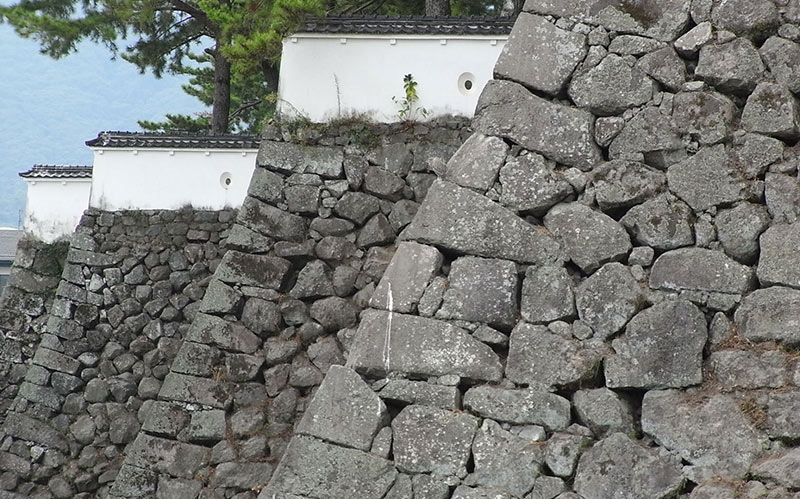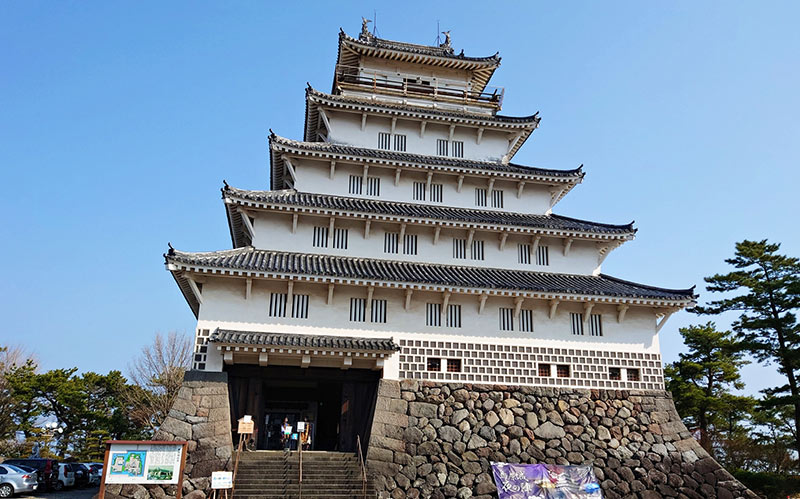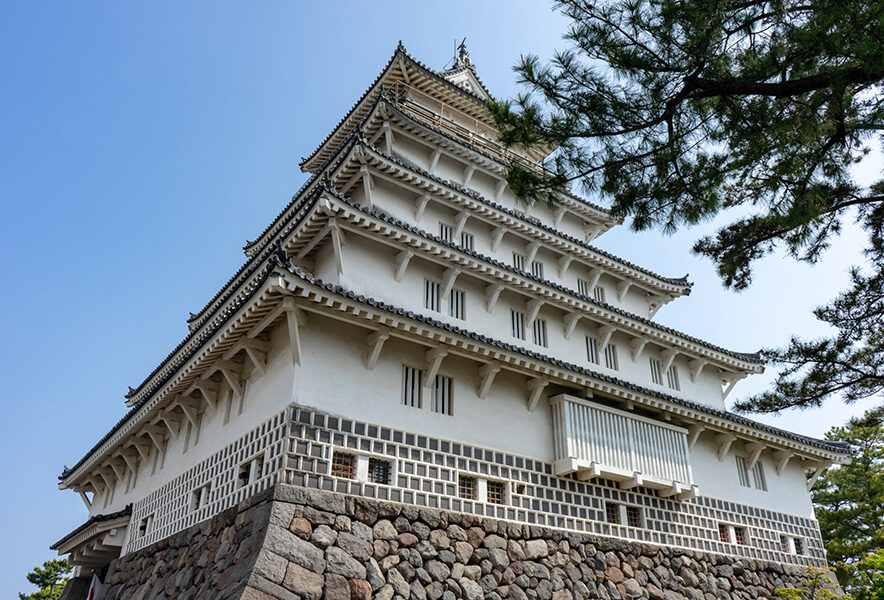- What kind of castle is “Shimabara Castle”? Shimabara’s famous castle that prospered as the seat of the Shimabara clan
- The Shimabara Rebellion, the largest revolt of the Edo period, broke out! Shimabara Castle, the base for the suppression of the revolt
- The interior of Shimabara Castle is maintained as an archive and memorial hall.
- Access to Shimabara Castle
- Parking around Shimabara Castle
- Shimabara Castle Official Website
- Recommended around Shimabara Castle
What kind of castle is “Shimabara Castle”? Shimabara’s famous castle that prospered as the seat of the Shimabara clan
Shimabara Castle” was located in Shimabara City, Nagasaki Prefecture.
The castle is now preserved as a Nagasaki Prefecture-designated historical site (Shimabara Castle Ruins Park), and the castle keep (historical museum), turrets, and walls have been restored.
The castle was built in 1624 by Shigemasa Matsukura, lord of the Hizen-no-e domain, and with the construction of the castle, it was changed to Hinoe Castle and became the domain office of the Shimabara domain (originally the Hinoe domain).
From then on, the castle flourished as the seat of the Nagasaki domain for about 240 years until the abolition of the domain in 1871, and 19 generations of five families (2 generations of the Matsukura family, 2 generations of the Takariki family, 13 generations of the Fukamizo Matsudaira family, 2 generations of the Toda family, and 2 generations of the Arima family during the Hinoe domain) served as domain lords.
The last lord of the domain, Matsudaira Tadakazu, was the half-brother of the 15th shogun, Tokugawa Yoshinobu, who served on the side of the new government during the Boshin War.
In 1874, the castle tower and turrets were destroyed by an ordinance to abolish the castle, but the castle tower and turrets were restored from the 1960s to the 1980s to their current appearance.
In 2016, the ruins of the castle were designated as a historic site by Nagasaki Prefecture.

The Shimabara Rebellion, the largest revolt of the Edo period, broke out! Shimabara Castle, the base for the suppression of the revolt
In 1637, the people of the Shimabara Peninsula (within the Shimabara clan) and the Amakusa Islands (within the Karatsu clan) revolted against the oppressive government and Christian oppressors of the two clans.
This is known as the “Shimabara Rebellion.
The revolt force, led by 17-year-old Amakusa Shiro Tokisada as general-in-chief and organized by ronin (former vassals of the Arima clan, a former feudal lord of Shimabara and also a Christian feudal lord), became a large force (about 37,000 strong) and encamped in the abandoned castle of Hara (former residence of the Arima clan), which was located about 20 km southwest of Shimabara Castle.
In response, the Shogunate organized a military force led by Matsudaira Nobutsuna, an old lieutenant, and sent a total of 125,000 soldiers to defeat the uprising.
Finally, the revolt was crushed in April 1638, four months after the outbreak of the rebellion, when the castle of Hara Castle was destroyed by a siege.
The revolt was crushed when all the revolters were killed.
On the other hand, the Shogunate forces suffered a heavy blow, including the death of Shigemasa Itakura, an envoy sent by the Edo Shogunate, which resulted in more than 8,000 casualties.
Matsukura Katsuie, lord of the Shimabara domain, who was responsible for the revolt, was beheaded (becoming the only feudal lord in the Edo period to be executed by beheading).
This revolt was the first and last full-scale war experienced by the Shogunate between the Battle of Osaka (1614, 1615) and the beginning of the Boshin War (1868).

The interior of Shimabara Castle is maintained as an archive and memorial hall.
Today, the castle keep and turrets in the castle were restored after the war and are used as a historical archive and memorial hall.
The main “keep” of Shimabara Castle is a historical museum, where materials related to Christianity and the administration of the Shimabara Domain are on display.
Visitors can learn about the Nanban trade policy of the Christian feudal lord Harunobu Arima, the persecution of Christians, and the history of the Shimabara clan up to the end of the Edo period.
The famous portrait of Amakusa Shiro can also be seen here.
The Tourism Reconstruction Memorial Hall is a theater room where visitors can watch a video about the damage caused by the 1991 eruption of Unzen Fugendake (a mountain located west of Shimabara Castle) and the subsequent reconstruction.
The “Folk Tool Museum” exhibits a large number of folk tools (clocks and tableware) that show how people lived in the Meiji, Taisho, and Showa periods.
Please come and experience the history of Shimabara at these facilities.
Access to Shimabara Castle
1-1183-1 Jonouchi, Shimabara-shi, Nagasaki 855-0036
Parking around Shimabara Castle
Shimabara Castle Official Website
Official site:https://shimabarajou.com/
